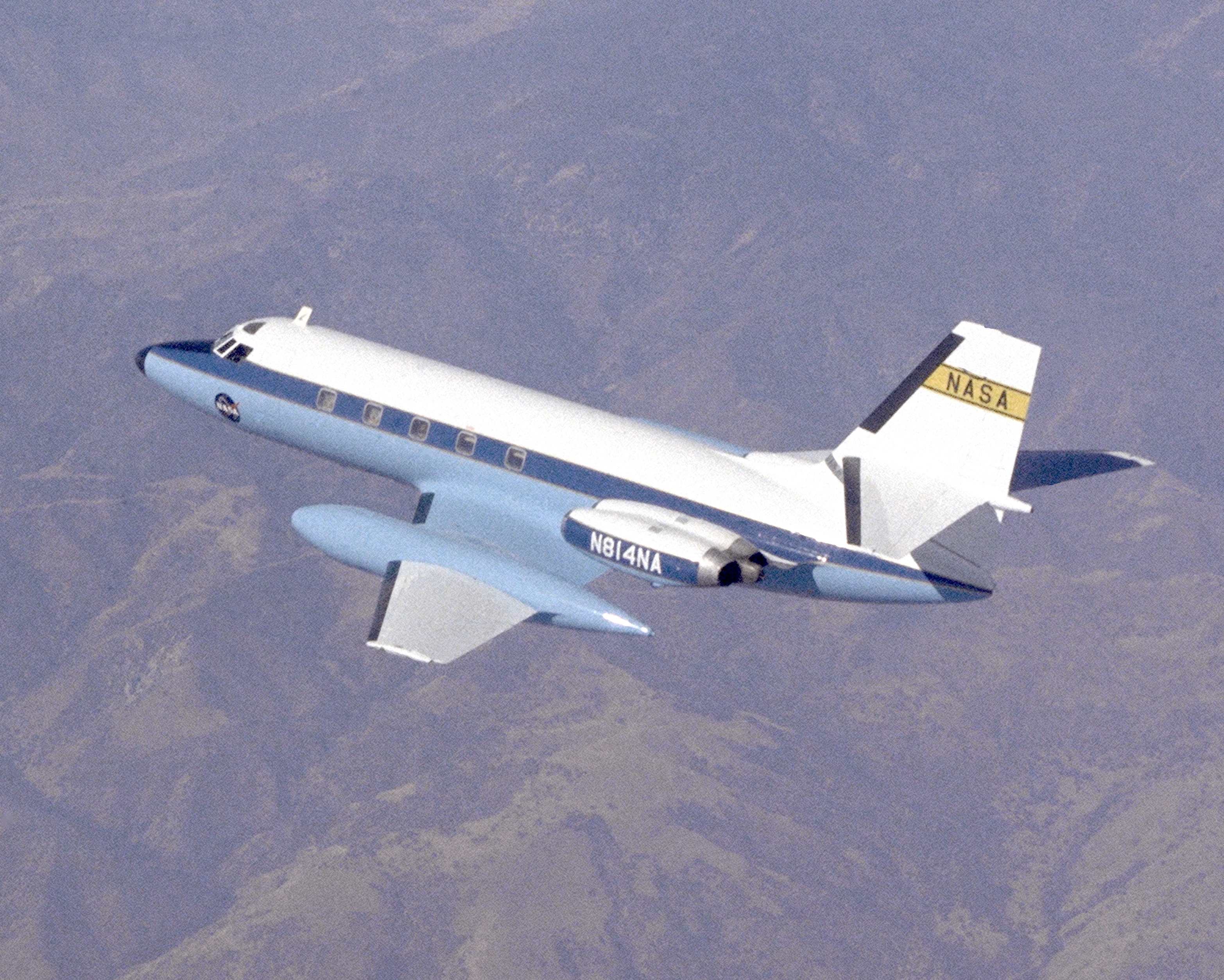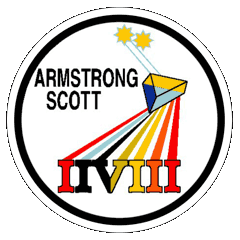|
Learjet 28
The Learjet 28 is an American eight-to-ten-seat (two crew and six to eight passengers), twin-engine, high-speed business jet, intended to be the successor to the Learjet 25. The Learjet 29 is identical except for the addition of a long-range fuel tank, resulting in the reduction of the capacity to six (two crew and four passengers). Both were manufactured by Learjet and were marketed under the Longhorn name. History The first flight of the Learjet 28 took place on August 24, 1977. The Learjet 28/29 was based on the Learjet 25, and received a completely new wing fitted with winglets which resulted in improved performance and fuel economy. The new wing was designed for the Learjet 55, and the Learjet 28 was originally planned to be a testbed for the wing, not a production type, but after the prototypes demonstrated excellent climb performance and the ability to operate at (the first business jet to do so), it was decided to offer the Learjet 28 and 29 as production aircraft. FAA cer ... [...More Info...] [...Related Items...] OR: [Wikipedia] [Google] [Baidu] |
Business Jet
A business jet, private jet, or bizjet is a jet aircraft designed for transporting small groups of people. Business jets may be adapted for other roles, such as the evacuation of casualties or express parcel deliveries, and some are used by public bodies, government officials or the armed forces. History Early developments The first small jet-powered civil aircraft was the Morane-Saulnier MS.760 Paris, developed privately in the early 1950s from the Morane-Saulnier MS.755 Fleuret, MS.755 Fleuret two-seat jet trainer. First flown in 1954, the MS.760 Paris differs from subsequent business jets in having only four seats arranged in two rows without a center aisle, similar to a light aircraft, under a large sliding canopy (aircraft), canopy similar to that of a fighter aircraft, fighter. A U.S. type certificate was awarded in July 1958, but commercial sales were limited, with most examples going to the military; an improved civil version similar to a modern very light jet, with a ... [...More Info...] [...Related Items...] OR: [Wikipedia] [Google] [Baidu] |
Learjet 25
The Learjet 25 is an American ten-seat (two crew and eight passengers), twin-engine, high-speed business jet aircraft manufactured by Learjet. It is a stretched version of the Learjet 24. Development The first Model 25 flew on August 12, 1966, and the first delivery was in November 1967. The Learjet 25 is similar to the Model 24 but is 1.27 m (4 ft 2 in) longer, allowing for three additional passengers. In 1970 the Learjet 25B was produced along with the Learjet 25C in the same year. Type development continued with the Models 25D and 25G, which included more advanced CJ610-8A engines and a ceiling increase to 51,000 feet. By 2018, 1970s Learjet 25s were sold for under $200,000. Design Engines Two General Electric CJ610-6 single-rotor axial-flow turbojet engines are pylon-mounted on the aft fuselage. Each engine is rated at 2950 pounds of thrust at sea level. The engine compartments consist of an eight-stage axial-flow compressor directly coupled to a two-sta ... [...More Info...] [...Related Items...] OR: [Wikipedia] [Google] [Baidu] |
Learjet 31
The Learjet 31 is an American built twin-engined, high speed business jet. Manufactured by Learjet, a subsidiary of Bombardier Aerospace, as the successor to the Learjet 29, it has a capacity of eight passengers and two crew. Design and development The first flight of the LJ31 took place on 11 May 1987. The Learjet 31A variant was introduced in October 1990. This version featured increased cruising speed, a digital avionics system with EFIS supplied by AlliedSignal (today Honeywell) and an instrument panel layout change. The nose gear wheel is steered by a Steer by Wire system. The windshield could be heated electrically. The Learjet 31ER with increased range was produced. The first 31A serial number 31A-035 entered service 15 August 1991. The 200th 31A was delivered in October 2000. The last 31A delivered, serial number 31A-242 was delivered 1 October 2003. By 2018, late 1990s to early 2000s Learjet 31As begin at $600,000. Variants Learjet 31 The Learjet Model 31 is, argu ... [...More Info...] [...Related Items...] OR: [Wikipedia] [Google] [Baidu] |
Business Jet
A business jet, private jet, or bizjet is a jet aircraft designed for transporting small groups of people. Business jets may be adapted for other roles, such as the evacuation of casualties or express parcel deliveries, and some are used by public bodies, government officials or the armed forces. History Early developments The first small jet-powered civil aircraft was the Morane-Saulnier MS.760 Paris, developed privately in the early 1950s from the Morane-Saulnier MS.755 Fleuret, MS.755 Fleuret two-seat jet trainer. First flown in 1954, the MS.760 Paris differs from subsequent business jets in having only four seats arranged in two rows without a center aisle, similar to a light aircraft, under a large sliding canopy (aircraft), canopy similar to that of a fighter aircraft, fighter. A U.S. type certificate was awarded in July 1958, but commercial sales were limited, with most examples going to the military; an improved civil version similar to a modern very light jet, with a ... [...More Info...] [...Related Items...] OR: [Wikipedia] [Google] [Baidu] |
Learjet 55
The Learjet 55 "Longhorn" is an American business jet manufactured by Learjet. Development and design The Learjet 50 series was first announced at the 1977 Paris air show with larger cabins than the existing Learjets. The series was to have three variants, the Learjet 54, 55 and 56 but only the Learjet 55 was built. The Learjet 55 was a low-wing cantilever monoplane with NASA developed winglets, the winglets gave rise to the nickname ''Longhorn''. The aircraft has a T-tail and is powered by two Garrett TFE731 turbofans mounted each side of the rear fuselage. It has a retractable tricycle landing gear and an enclosed cabin for up to ten passengers and a cockpit for the two crew. Construction of the Learjet 55 began in April 1978 after extensive testing and work on the wing design which came, initially, from the Learjet 25. The Learjet 55 first flew on 19 April 1979. The first production aircraft were produced starting 18 March 1981. 147 Learjet 55 aircraft were delivered. By 2018, ... [...More Info...] [...Related Items...] OR: [Wikipedia] [Google] [Baidu] |
Neil Armstrong
Neil Alden Armstrong (August 5, 1930 – August 25, 2012) was an American astronaut and aeronautical engineer who became the first person to walk on the Moon in 1969. He was also a naval aviator, test pilot, and university professor. Armstrong was born and raised in Wapakoneta, Ohio. A graduate of Purdue University, he studied aeronautical engineering; his college tuition was paid for by the U.S. Navy under the Holloway Plan. He became a midshipman in 1949 and a naval aviator the following year. He saw action in the Korean War, flying the Grumman F9F Panther from the aircraft carrier . In September 1951, while making a low bombing run, Armstrong's aircraft was damaged when it collided with an anti-aircraft cable, strung across a valley, which cut off a large portion of one wing. Armstrong was forced to bail out. After the war, he completed his bachelor's degree at Purdue and became a test pilot at the National Advisory Committee for Aeronautics (NACA) High-Speed Fligh ... [...More Info...] [...Related Items...] OR: [Wikipedia] [Google] [Baidu] |
General Electric CJ-610
The General Electric CJ610 is a non-afterburning turbojet engine derived from the military J85, and is used on a number of civilian business jets. The model has logged over 16.5 million hours of operation. Civilian versions have powered business jets such as the Learjet 23 and the Hamburger Flugzeugbau HFB 320 Hansa Jet. The engines are also used in the flyable Messerschmitt Me 262 reproductions built by the Me 262 Project in the United States. A development, the CF700, added a rear-mounted fan mounted directly on the free-running low-pressure turbine. Variants ;CJ610-1: thrust ;CJ610-2B: thrust ;CJ610-4: thrust ;CJ610-6: thrust ;CJ610-8A: thrust ;CJ610-9: thrust Applications * Aero Commander 1121 Jet Commander * HFB 320 Hansa Jet * Learjet 23 * Learjet 24 * Learjet 25 * Learjet 28 * Margański & Mysłowski EM-10 Bielik * Messerschmitt Me 262 replicas A-1c and B-1c.The "c" suffix stands for the flyable reproductions equipped with the J85-derived CJ610 engine instead of t ... [...More Info...] [...Related Items...] OR: [Wikipedia] [Google] [Baidu] |
Turbojet
The turbojet is an airbreathing jet engine which is typically used in aircraft. It consists of a gas turbine with a propelling nozzle. The gas turbine has an air inlet which includes inlet guide vanes, a compressor, a combustion chamber, and a turbine (that drives the compressor). The compressed air from the compressor is heated by burning fuel in the combustion chamber and then allowed to expand through the turbine. The turbine exhaust is then expanded in the propelling nozzle where it is accelerated to high speed to provide thrust. Two engineers, Frank Whittle in the United Kingdom and Hans von Ohain in Germany, developed the concept independently into practical engines during the late 1930s. Turbojets have poor efficiency at low vehicle speeds, which limits their usefulness in vehicles other than aircraft. Turbojet engines have been used in isolated cases to power vehicles other than aircraft, typically for attempts on land speed records. Where vehicles are "turbine-powere ... [...More Info...] [...Related Items...] OR: [Wikipedia] [Google] [Baidu] |
1970s United States Business Aircraft
Year 197 ( CXCVII) was a common year starting on Saturday (link will display the full calendar) of the Julian calendar. At the time, it was known as the Year of the Consulship of Magius and Rufinus (or, less frequently, year 950 '' Ab urbe condita''). The denomination 197 for this year has been used since the early medieval period, when the Anno Domini calendar era became the prevalent method in Europe for naming years. Events By place Roman Empire * February 19 – Battle of Lugdunum: Emperor Septimius Severus defeats the self-proclaimed emperor Clodius Albinus at Lugdunum (modern Lyon). Albinus commits suicide; legionaries sack the town. * Septimius Severus returns to Rome and has about 30 of Albinus's supporters in the Senate executed. After his victory he declares himself the adopted son of the late Marcus Aurelius. * Septimius Severus forms new naval units, manning all the triremes in Italy with heavily armed troops for war in the East. His soldiers embark ... [...More Info...] [...Related Items...] OR: [Wikipedia] [Google] [Baidu] |





